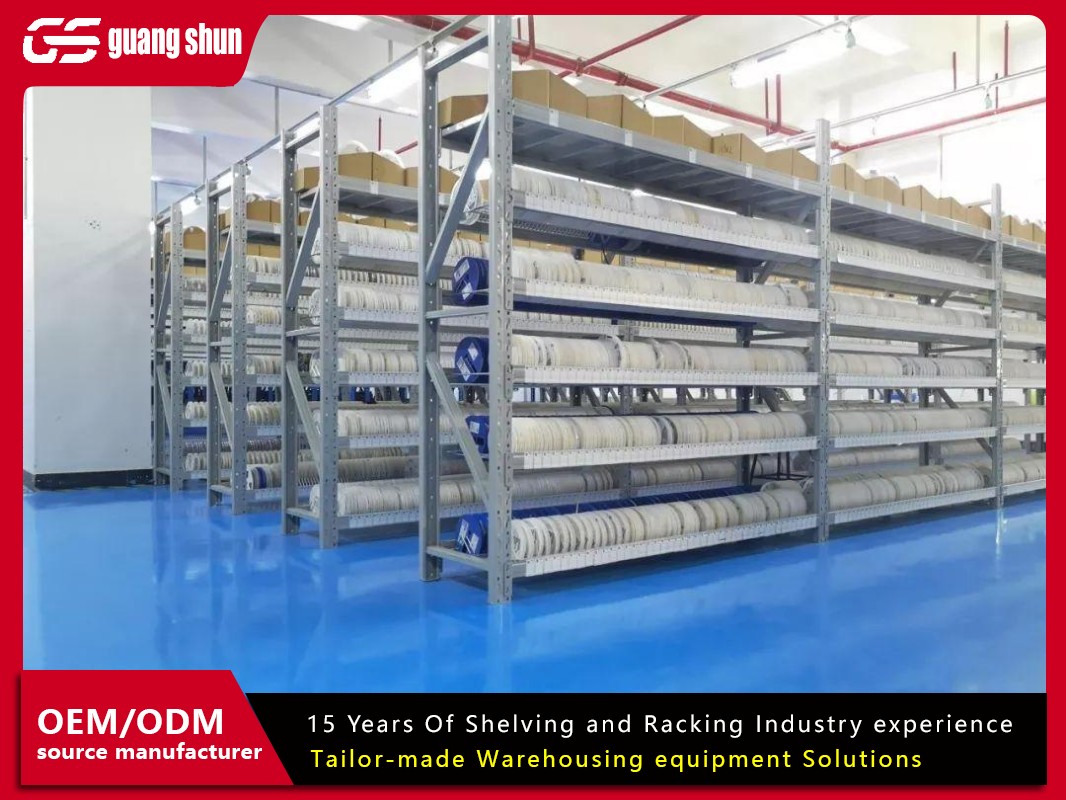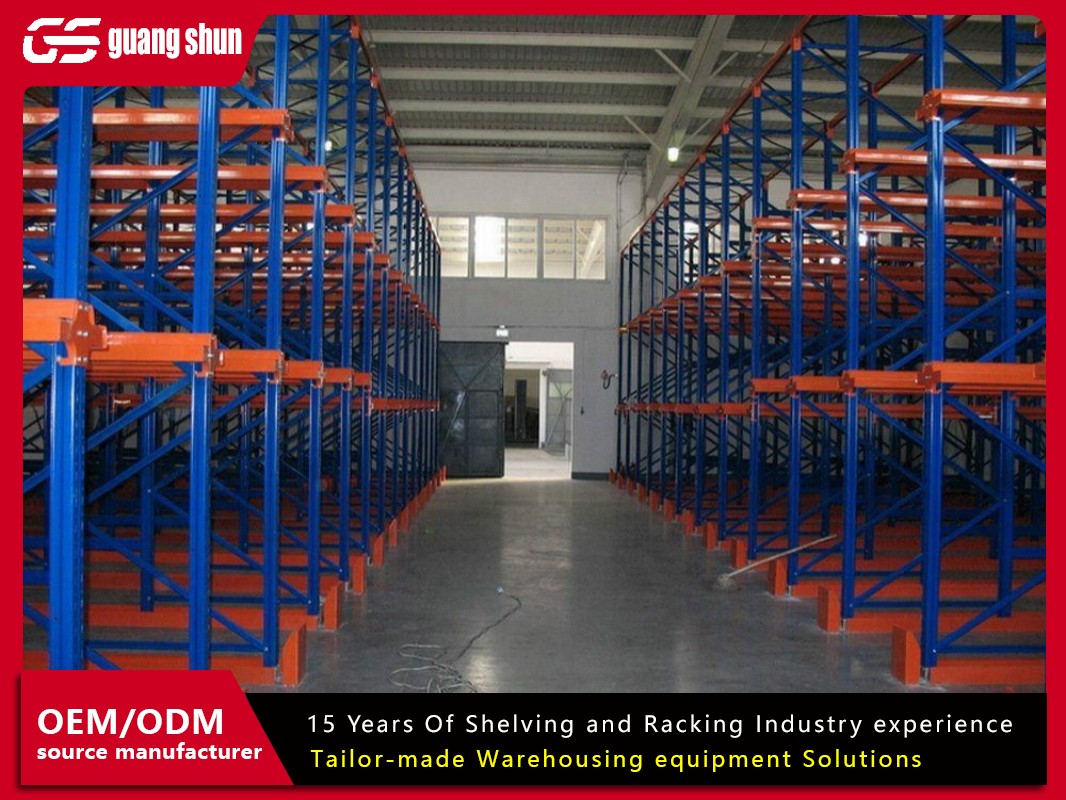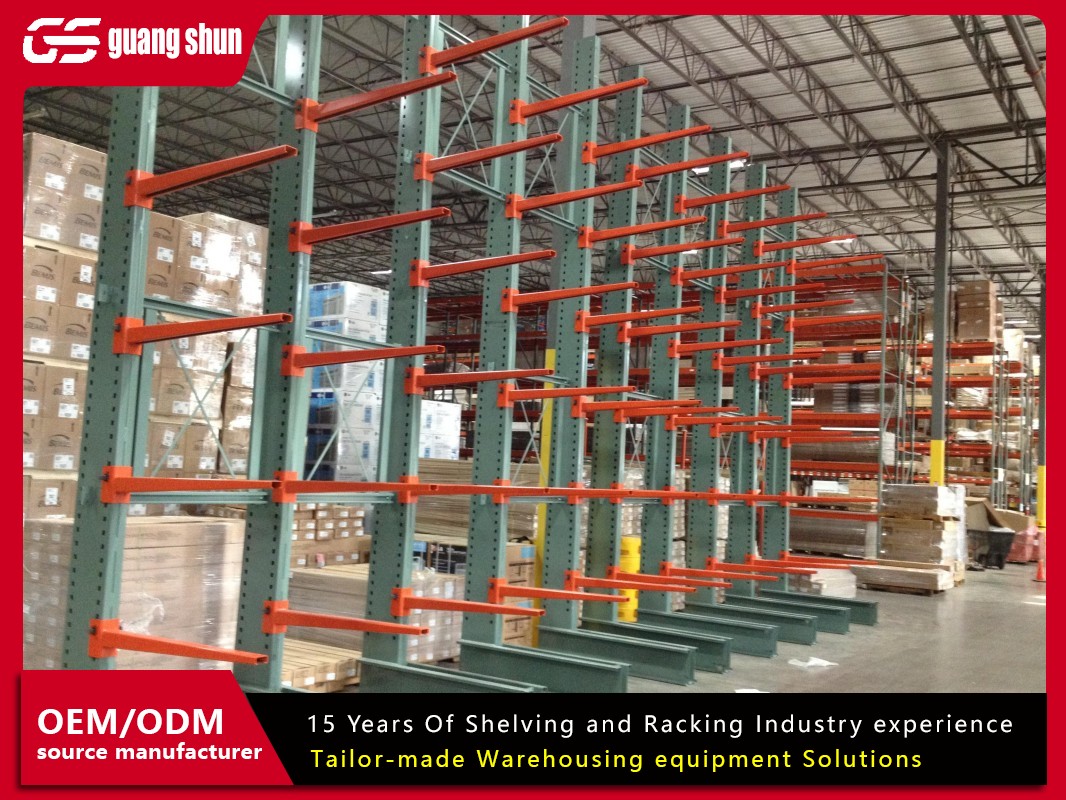In today's fast-paced logistics and supply chain industry, efficient storage solutions are crucial for businesses to thrive. A pallet racking warehouse is a specialized storage facility designed to organize and store palletized goods systematically, maximizing space and improving operational flow. This system uses various types of racking structures to support high-density storage, making it a cornerstone of modern warehousing. As companies face increasing demands for inventory management and quick turnaround times, understanding the intricacies of a pallet racking warehouse can lead to significant cost savings and productivity gains. This article delves into the key aspects of pallet racking warehouses, providing insights into their types, benefits, design, safety, and economic impact. By exploring these facets, businesses can make informed decisions to optimize their storage environments and stay competitive in a dynamic market.
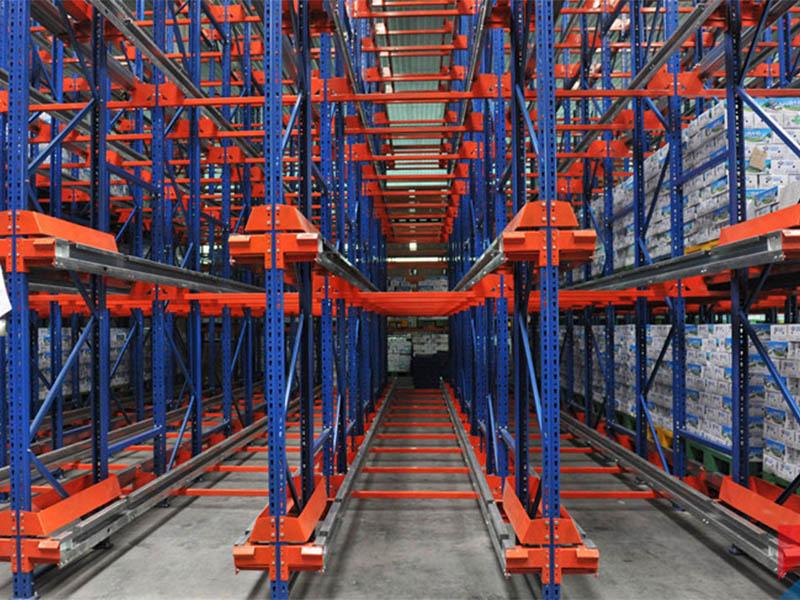
Types of Pallet Racking Systems in a Warehouse
A pallet racking warehouse typically incorporates several types of racking systems, each tailored to specific storage needs and operational requirements. The most common systems include selective pallet racking, which allows direct access to every pallet, making it ideal for warehouses with high product variety and frequent retrieval. Drive-in and drive-through racking systems are designed for high-density storage, where forklifts can drive into the racks to store or retrieve pallets, suitable for environments with lower stock turnover. Push-back racking offers a dynamic storage solution by allowing pallets to be stored in depth, with new pallets pushing older ones backward, enhancing space utilization for last-in, first-out (LIFO) inventory. Another popular option is pallet flow racking, which uses gravity rollers to move pallets from the loading to the unloading end, perfect for high-throughput operations with first-in, first-out (FIFO) requirements. Additionally, cantilever racking is used for long, bulky items like pipes or lumber, providing flexibility in a pallet racking warehouse without the need for vertical posts. Each system has its advantages, and selecting the right one depends on factors such as inventory type, warehouse layout, and handling equipment. By understanding these options, businesses can customize their pallet racking warehouse to achieve optimal efficiency and scalability.
Benefits of Implementing a Pallet Racking Warehouse
Implementing a pallet racking warehouse brings numerous benefits that directly impact a company's bottom line and operational efficiency. First and foremost, it maximizes vertical space utilization, allowing warehouses to store more goods in the same footprint, which is especially valuable in urban areas where real estate costs are high. This vertical expansion reduces the need for larger facilities, leading to significant cost savings. Secondly, a well-designed pallet racking warehouse improves inventory accessibility and organization, enabling faster picking and stocking processes. This efficiency translates to reduced labor costs and minimized errors, enhancing overall productivity. Moreover, these systems support better inventory management through clear visibility and systematic arrangement, which aids in accurate stock counting and reduces the risk of obsolescence. Safety is another key advantage, as pallet racking structures are engineered to distribute weight evenly, reducing the likelihood of collapses and accidents. Additionally, a pallet racking warehouse can be easily reconfigured or expanded to adapt to changing business needs, offering long-term flexibility. By investing in such a system, companies can also improve their sustainability efforts by minimizing waste and optimizing resource use. Overall, the benefits of a pallet racking warehouse extend beyond storage, contributing to a more resilient and agile supply chain.
Design Considerations for an Optimal Pallet Racking Warehouse
Designing an effective pallet racking warehouse requires careful planning to ensure it meets specific operational goals while maintaining safety and efficiency. One critical aspect is the warehouse layout, which should facilitate smooth traffic flow for forklifts and personnel, minimizing congestion and delays. This involves considering aisle widths, rack placement, and loading zones to optimize movement. Another important factor is the load capacity and dimensions of the racking systems, which must align with the weight and size of the stored pallets to prevent overloading and structural failures. Engineers often use software tools to simulate designs and assess factors like seismic resistance and wind loads in a pallet racking warehouse. The type of inventory also influences design choices; for instance, perishable goods might require specific racking for climate control, while high-value items may need enhanced security features. Integration with warehouse management systems (WMS) is essential for real-time tracking and automation, allowing a pallet racking warehouse to operate seamlessly with technologies like barcode scanners or RFID. Furthermore, considerations for future expansion should be included in the design, such as modular racking components that can be easily added or rearranged. By addressing these elements, businesses can create a pallet racking warehouse that not only stores goods efficiently but also supports growth and innovation in the long run.
Safety Measures and Maintenance in a Pallet Racking Warehouse
Safety is paramount in a pallet racking warehouse to protect workers, inventory, and infrastructure from potential hazards. Regular inspections and maintenance are crucial to identify issues like bent beams, loose connections, or corrosion that could lead to collapses. Implementing a preventive maintenance schedule, including checks for load limits and structural integrity, helps mitigate risks and extends the lifespan of the racking systems. Training programs for employees are equally important, covering proper forklift operation, loading techniques, and emergency procedures to reduce accidents. In a pallet racking warehouse, it's also essential to use safety accessories such as rack guards, column protectors, and anti-collapse mesh to prevent damage from impacts and ensure stability. Clear signage and labeling of load capacities and hazardous zones further enhance safety by promoting awareness and compliance. Additionally, adhering to industry standards and regulations, such as those from OSHA or local authorities, ensures that the pallet racking warehouse meets minimum safety requirements. In case of incidents, having a response plan in place, including evacuation routes and first-aid stations, can save lives and minimize downtime. By prioritizing safety and maintenance, businesses can foster a secure environment in their pallet racking warehouse, boosting morale and reducing liability costs.
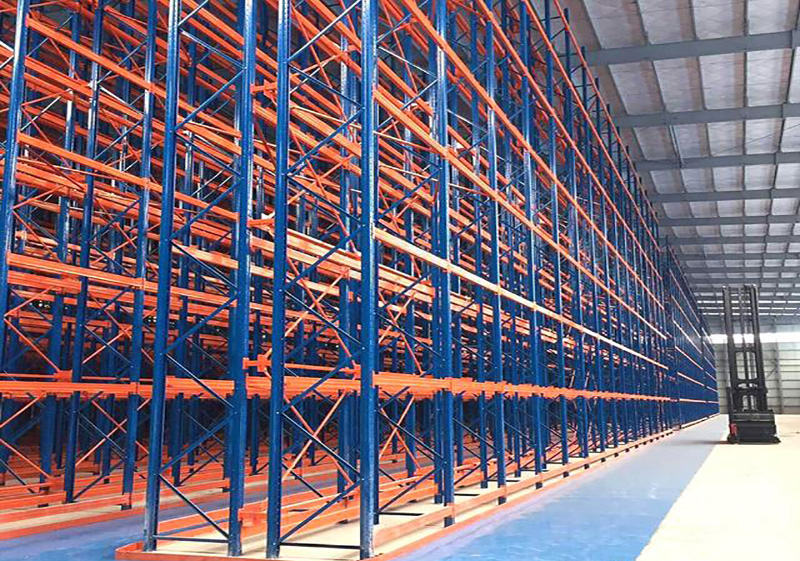
Cost and Return on Investment for a Pallet Racking Warehouse
Investing in a pallet racking warehouse involves evaluating both initial costs and long-term returns to justify the expenditure. The upfront expenses include the purchase of racking systems, installation labor, and any necessary modifications to the warehouse infrastructure, such as flooring or lighting. These costs can vary based on the type of racking chosen—for example, selective racking is generally more affordable than automated systems. However, the return on investment (ROI) for a pallet racking warehouse is often substantial due to improved space utilization, which can reduce the need for additional storage facilities and lower rental expenses. Operational efficiencies, such as faster inventory turnover and reduced labor hours, also contribute to cost savings over time. Businesses should conduct a cost-benefit analysis that considers factors like increased storage capacity, reduced product damage, and enhanced inventory accuracy. In many cases, a well-implemented pallet racking warehouse can achieve ROI within a few years, especially when integrated with technology for automation. Financing options, such as leases or loans, may make the investment more accessible for small to medium enterprises. Moreover, the scalability of pallet racking systems allows for incremental upgrades, spreading costs while adapting to growth. By understanding the financial aspects, companies can make strategic decisions that maximize the value of their pallet racking warehouse and support sustainable business expansion.
Future Trends in Pallet Racking Warehouse Development
The evolution of pallet racking warehouses is driven by technological advancements and changing market demands, leading to innovative trends that shape the future of storage solutions. Automation is a major trend, with the integration of robotic systems and automated guided vehicles (AGVs) that enhance efficiency in a pallet racking warehouse by reducing human intervention and speeding up processes. These technologies enable 24/7 operations and improve accuracy in inventory management. Another emerging trend is the use of data analytics and IoT (Internet of Things) sensors to monitor rack conditions and inventory levels in real time, allowing for predictive maintenance and optimized space usage in a pallet racking warehouse. Sustainability is also gaining prominence, with designs focusing on energy-efficient lighting, recyclable materials, and green building standards to minimize environmental impact. Additionally, modular and customizable racking systems are becoming more popular, offering flexibility to adapt to fluctuating inventory needs without major renovations. The rise of e-commerce is pushing for higher-density storage solutions, such as mobile pallet racking, which can compact aisles to save space in a pallet racking warehouse. As these trends continue to evolve, businesses that embrace innovation in their pallet racking warehouse will be better positioned to handle future challenges and capitalize on opportunities in the global supply chain.
Frequently Asked Questions About Pallet Racking Warehouse
Q1: What is a pallet racking warehouse, and how does it differ from traditional storage?
A1: A pallet racking warehouse is a storage facility that uses specialized racking systems to organize and store palletized goods efficiently, maximizing vertical space and improving accessibility. Unlike traditional storage, which might rely on simple shelving or floor stacking, a pallet racking warehouse incorporates engineered structures like selective or drive-in racking to support high-density storage, reduce clutter, and enhance safety. This system allows for better inventory management, faster retrieval times, and scalability, making it ideal for modern logistics operations where space optimization and quick turnover are critical.
Q2: What are the main types of pallet racking systems used in a warehouse?
A2: The main types of pallet racking systems include selective racking for easy access to individual pallets, drive-in and drive-through racking for high-density storage with LIFO inventory, push-back racking for depth-based storage, pallet flow racking for FIFO inventory using gravity, and cantilever racking for long or bulky items. Each type is suited to specific warehouse needs, such as inventory variety, turnover rates, and space constraints, allowing businesses to customize their pallet racking warehouse for optimal performance.
Q3: How can I ensure safety in a pallet racking warehouse?
A3: Ensuring safety in a pallet racking warehouse involves regular inspections and maintenance to check for structural damage, proper training for employees on handling equipment and loading procedures, and the use of safety accessories like rack guards and anti-collapse mesh. Adhering to load capacity limits, maintaining clear aisles, and following industry regulations also help prevent accidents. Implementing a comprehensive safety plan, including emergency protocols, can further protect workers and assets in the pallet racking warehouse environment.
Q4: What factors should I consider when designing a pallet racking warehouse?
A4: When designing a pallet racking warehouse, key factors include the warehouse layout for efficient traffic flow, load capacity and dimensions of the racking systems, type of inventory and its storage requirements, integration with warehouse management systems, and provisions for future expansion. It's also important to consider safety measures, environmental conditions, and compliance with local building codes. A well-thought-out design ensures that the pallet racking warehouse meets current needs while allowing for adaptability and growth.
Q5: What is the typical return on investment for a pallet racking warehouse?
A5: The return on investment for a pallet racking warehouse varies based on factors like the initial setup costs, type of racking system, and operational efficiencies gained. Generally, businesses can achieve ROI within 2 to 5 years through savings from increased storage capacity, reduced labor costs, lower product damage, and improved inventory accuracy. By maximizing space and streamlining processes, a pallet racking warehouse often leads to long-term financial benefits, making it a worthwhile investment for companies looking to enhance their supply chain operations.



